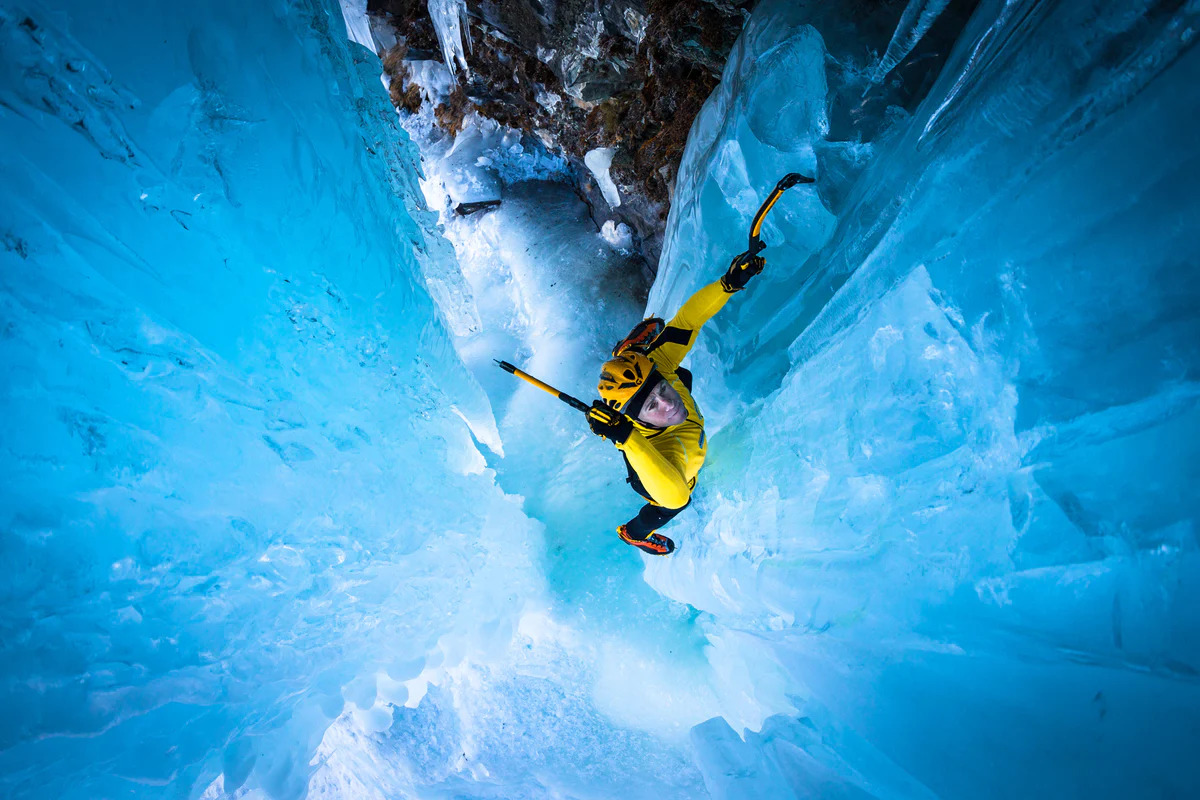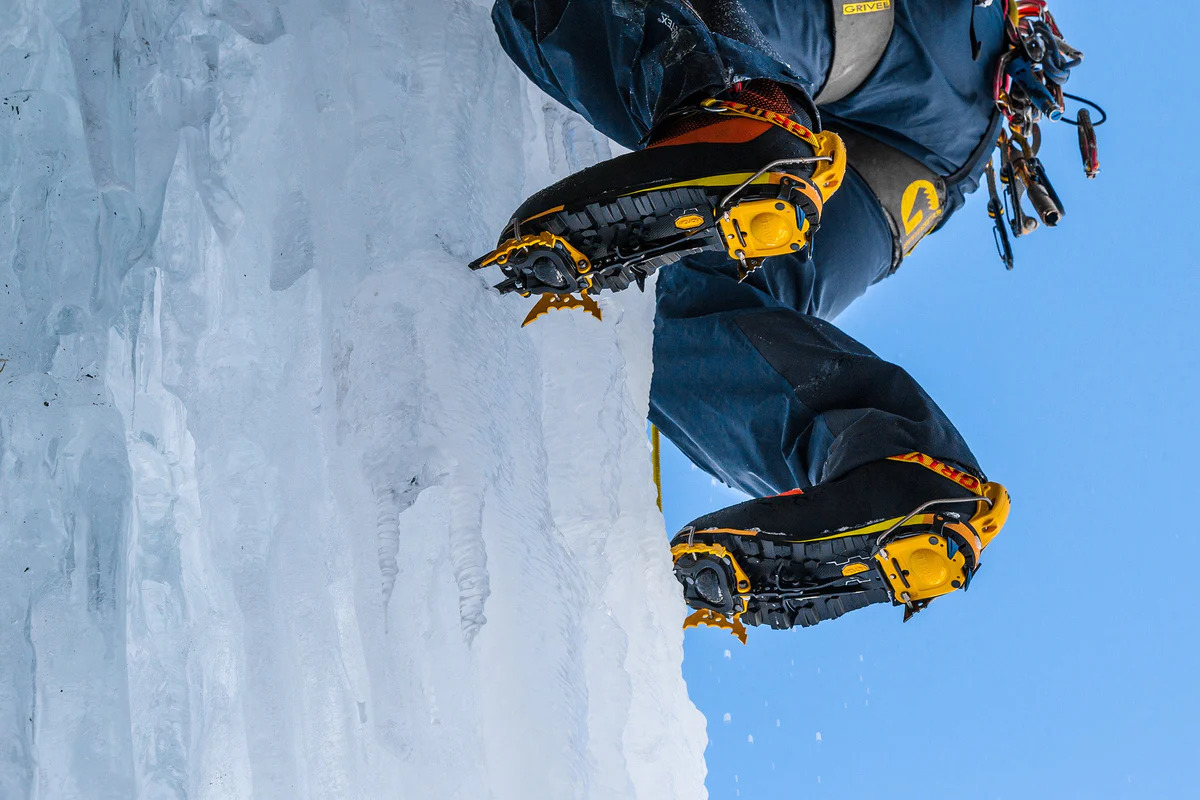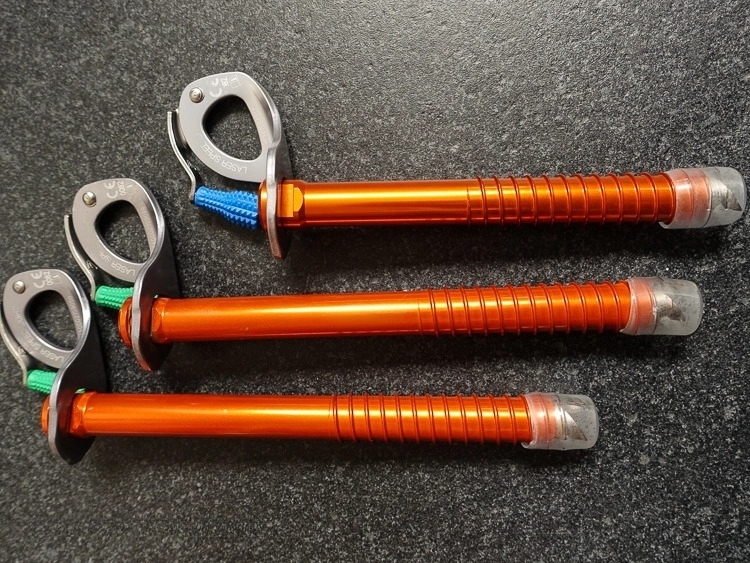Among all the possible activities that the alpine environment offers, ice climbing is particularly susceptible to the variability of weather conditions. Unlike rock climbing, its practicability depends not only on atmospheric conditions but also on the type of ice formations, how much they change within the same day depending on temperatures, and how they react to humidity. It's no wonder that the same climb can vary significantly at different times of the year.
Engaging in this activity requires a profound knowledge of the environment, supported by solid experience and skilled companions who have acquired a crucial background through many years spent on ice. In total, there are eleven types of ice with profoundly different structures and constitutive elements, involving specific materials and precise situation management.
In parallel with other climbing activities, ice climbing has undergone rapid evolution in both materials and progression techniques to cope with the diverse scenarios that climbers must manage for increasingly demanding climbs. For example, we've transitioned from the first long, straight-handle ice axes to curved and shorter handle models, better suited for more vertical climbs. Instead of hobnailed boots, we've introduced crampons, initially equipped with vertical points, later completed by horizontal front points that allow us to hook onto vertical icefalls.
Today, ice climbing equipment relies on specific gear for both protection and safety, more technical apparel, and numerous accessories for greater comfort while climbing. We'd like to provide you with a checklist to give you an idea of what a complete kit for ice climbing looks like, in case you are curious to explore this frozen world.
Progression material
Ice axes form the foundation of our ice climbing equipment and serve as the quintessential symbol of this climbing style. The structure of ice axes still resembles the initial prototypes primarily used for traversing over snow, but they have since evolved with angles, materials, and details to meet contemporary needs. The shape and materials of the numerous ice axes available today immediately convey their primary use: an essential and lightweight design guarantees super technical performance, perhaps tailored for competitions. On the other hand, a more robust structure, designed to accommodate various accessories, is better suited for alpine environments.
Technical ice axes specifically crafted for ice climbing feature highly curved blades (with an angle of more than 45°) and very short shafts, often made of aluminum alloy. The ergonomic design of the handle and the overall lightness of the ice axe ensure excellent and precise strikes, along with enhanced downward tractions. This combination provides a secure and swift progression, contributing to a safer and faster climbing experience.

In Action with the Grivel Tech Machine Ice Axes
If we were to consider all the activities in which we can use crampons, we would get lost in listing the types of bindings, the number of points, the presence of front points, materials, and countless other features. Crampons for ice climbing represent a subset of this already decidedly technical family, with an automatic attachment system for boots and a semi-rigid horizontal or rigid vertical structure.
We can recognize crampons with automatic binding by the front steel bail that engages with a specific groove in "crampon-compatible" boots and a rear lever that locks the boot by fitting into a rubber insert located just above the heel. These crampons provide stability and solidity to the fit, ensuring precision and effectiveness when striking the ice.
When we talk about the structure of crampons, we refer to the system that connects the front and rear parts and is closely linked to the boot to provide support and stability during progression. Crampons with a horizontal structure are the most classic and adaptable to very different terrains, while those with a vertical structure are specifically designed to tackle vertical ice. Also typical of icefalls are crampons with a rigid structure, characterized by a significantly higher weight and designed to maximize efficiency during the striking phase on ice. Naturally, the choice of crampons is closely connected to the type of boots we may already have available.

Grivel G22 Plus Crampons
Safety Equipment
Ice screws, or ice pitons, allow us to secure ourselves as we ascend and primarily differ in length and thread type. The materials used are almost always aluminum for the tube and steel for the tip, along with an ultra-light crank that facilitates screwing and insertion into the ice. The screws must adapt to the different hardness levels of the ice, always aiming to be simple to use, safe, and quick to place. Their lightweight nature is a plus when considering the overall weight of the equipment we need to carry on our shoulders, especially during long approaches.

Petzl Laser Speed Light Ice Screw
When we go sport climbing we precisely know how much weight the bolts and the anchors can tolerate in case of fall; we don’t have the same certainties when we go ice climbing, as the anchorages quality depends on the ice conditions too. Ice is extremely changeable and it can have a wide range of consistency and solidity. For this reason in case of fall it is the rope that has to tolerate the most of the forces involved. We normally use half-ropes alternating between them, thus applying less friction and pressure on both and therefore contributing to the preservation of their good conditions.
All the ropes made for ice climbing should have Dry Treatment that improves its resistance to water and to abrasion. This factor is not only crucial to increase durability in the longer term but also to offer better performances in the short term. A dry or iced rope is less elastic and therefore less resistant.
As regards for quikcdraws, we don’t need specific models desisgned for ice climbing; we can use the classic quickdraws for rock climbing, but we can anyway consider some key factors. Quickdraws with a large sling will be easier to use while wearing gloves and we will be able to easy and quick pick them from our harness while we are trying to progress safely. As regards for the quickdraws gates, we usually choose wire gates firstly because they are light and then because they are less likely to get iced with freezing temperatures.
Other equipment
Hooks
Every ice climber has a solid kit of screws, hangers and hooks (Abalakov or progression hooks) that can be used – together with slings, carabiner and many other gear types – to equip anchors, descents and in some extreme situation to replace ice screws if there’s no way to use them.
Boots
Boots suitable for ice climbing need to enclose a set of characteristics that make them result warm and comfortable, wrap-around yet light. There are several factors you should keep in mind when choosing your boots: as we already said in the crampons paragraph, you should evaluate their adaptability to automatic or semi automatic crampons or, if they don’t have any rubber lip, to universal crampons.
Helmet
When it comes to ice climbing, a helmet must provide complete and reliable protection from impacts and falling rocks or ice chunks. That's why the ideal helmet should have both Up and Side Protection. The number of ventilation holes is irrelevant, as it will primarily be used in cold and freezing conditions. On the contrary, you will prefer a solid and robust model.
Gloves
Gloves represent a fundamental element of our kit. Finding the most suitable model for our needs allows us to give our best while climbing, without encountering obstacles. The parameters to consider are, first of all, waterproofness and their ability to keep our hands warm despite the coldest temperatures. Secondly, they must be snug to follow all our movements and possibly thin to avoid hindrance during progression and belaying maneuvers. Many climbers and mountaineers have different models to choose from based on the specific objective of the day outdoors: for mountaineering, they prefer thick and warm gloves, while for ice falls, they opt for thin models, perhaps with elastic inserts that guarantee excellent grip; of course, they should be waterproof.
Backpacks
Backpacks for the most intense activities related to the world of ice are generally very compact, with a capacity that reflects the duration of our activity and solid characteristics of water resistance and abrasion. Their ability to carry technical equipment will depend on the type of holders and loops and how they combine with our specific needs. We will choose different types of backpacks: more capacious in case we will make long and snowy approaches before dedicating ourselves to our alpine and mixed climbing or more essential if we will climb waterfalls with short approaches from the car. Another factor that becomes important as the "playing field" changes is the type of closure: a side zip allows us, for example, to access the material without removing the backpack from the shoulders, while a roll-top closure helps us to close faster and without many buckles a backpack loaded with material.
Harnesses
The climbing and ice climbing harness should preferably be adjustable so that we can adjust the fit around our multilayer clothing. The possibility of completely opening the thigh straps through the special buckles allows us, for example, to insert the harness even while wearing crampons or any other type of bulky equipment typical of snowy activities. Contrary to sport climbing, we will not look for the most essential and lightweight model possible, but we will orient ourselves toward a warm harness, perhaps with a padded belt, capable of making us feel comfortable throughout the day in an alpine environment.
